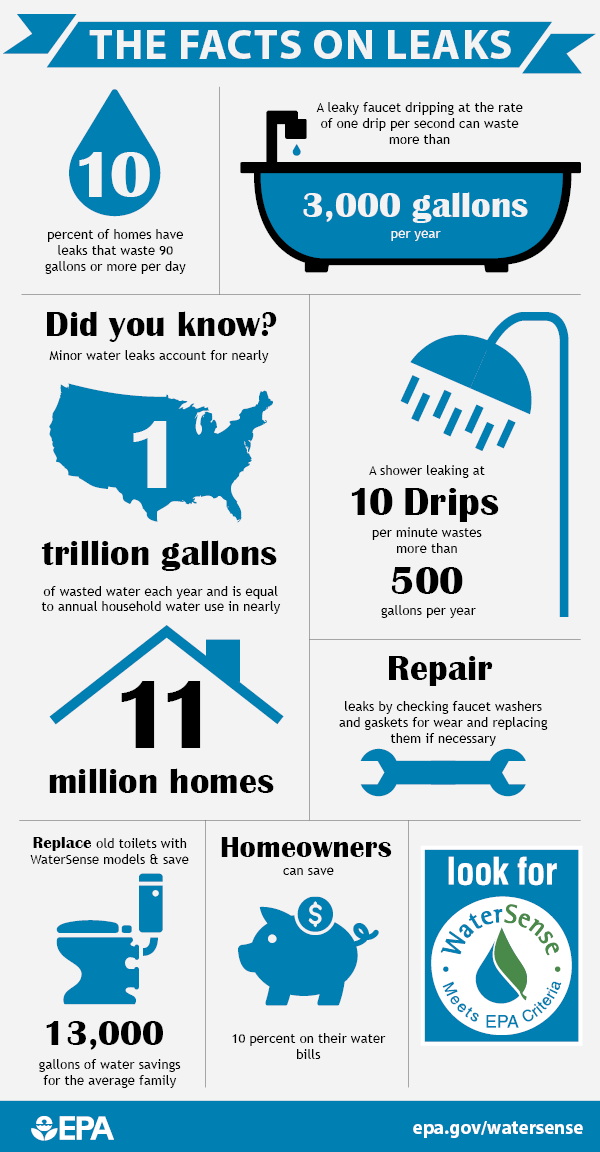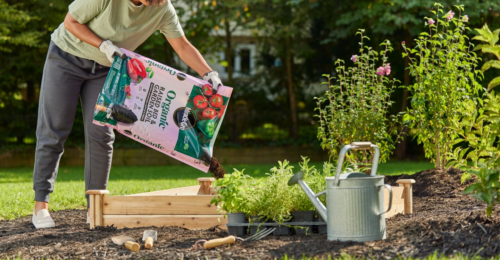Household water leaks in the U.S. can waste nearly one trillion gallons of water each year. That’s equal to the amount of water needed for 11 million homes for a year according to the EPA’s WaterSense program. In fact, the average home may lose almost 10,000 gallons of water every year, and 10% of homes have leaks that waste 90 gallons or more per day. That’s why WaterSense has a campaign every spring to raise awareness about the amount of water being wasted from small, household leaks. We are excited to promote the great resources they make available and share advice on ways to identify and fix leaks to save you water and money.
“The most common leaks in the home that waste the most water include dripping faucets, dripping showerheads and running toilets. Regular maintenance can avoid losing thousands of gallons of water, and they’re easier projects than you might think,” says John Hembree, Associate Product Development Merchant for Faucet and Toilet Repair at The Home Depot. Fixing these common leaks can save about 10% on the average water bill. In this article, we will explain how to identify if you have a hidden leak, outline ways to fix the most common household leaks and provide links to detailed tutorials.
1. Do you have a leak?
The first step is to determine if you have a leak since not all leaks are as obvious as an annoying, dripping faucet. WaterSense outlines easy and practical ways to determine if you may have a leak. Some examples include checking your water meter before and after a two-hour period when you know no water is being used. If the meter changes, that means water is running somewhere, and you have a leak. Toilet leaks can be very subtle and quiet, so a sure way to know if one is leaking is to lace a drop of food coloring in the toilet tank. Wait 10 minutes, and if any of that food coloring appears in the toilet bowl then you know your toilet flapper is leaking.
2. Fix a leaking faucet.
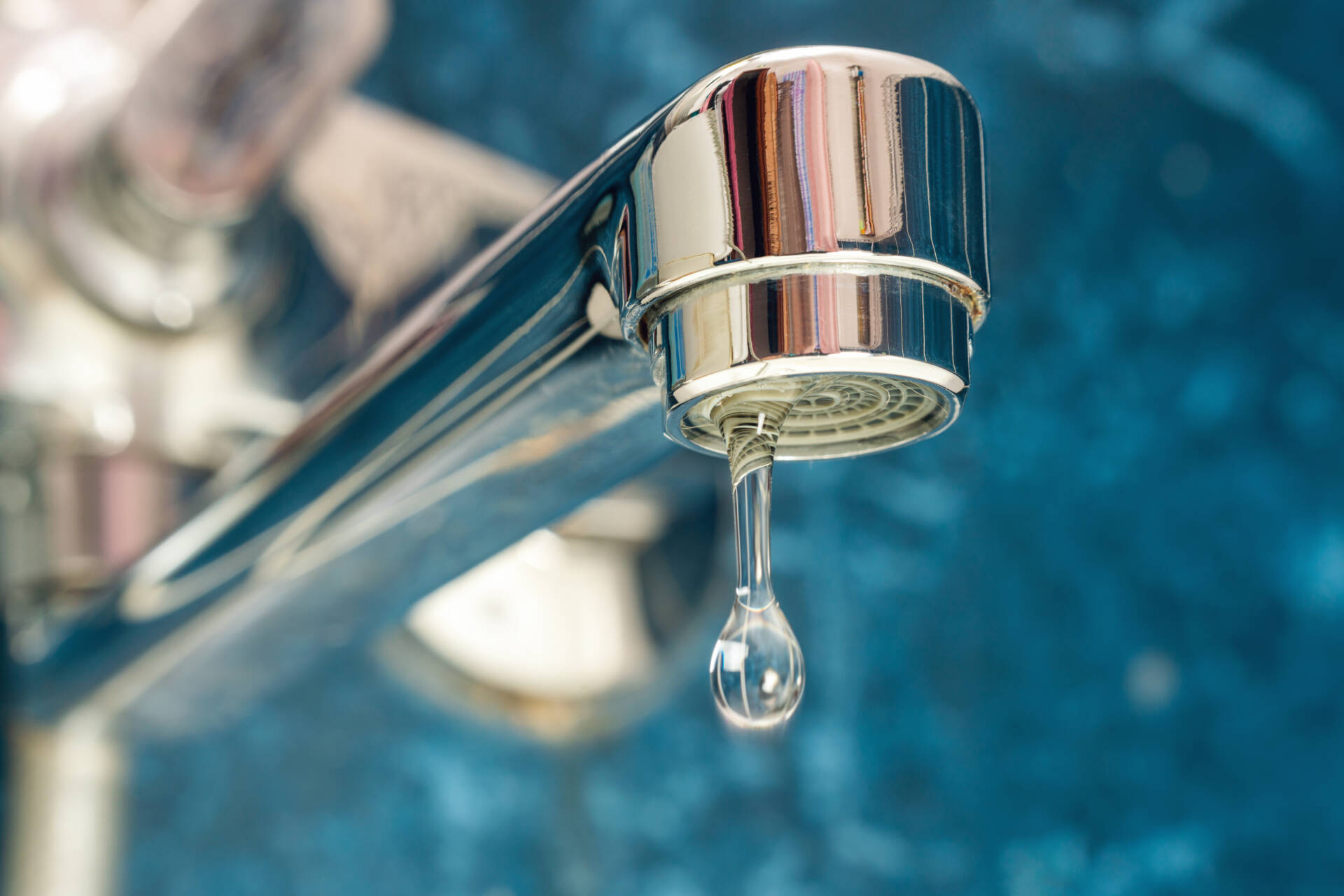
Inside of faucet handles are mechanisms called cartridges which regulate water from the water supply line through and out of the faucet. These cartridges include washers, or O-rings, that seal the cartridge and keep water from dripping out of the faucet handle. Over time, these washers and O-rings can wear out and need to be replaced, and they’re available at The Home Depot.
If replacing washers or O-rings does not fix the problem, you may have other internal components failing. Faucet repair kits with a variety of components are available. An alternative is that you may need to replace the cartridge itself. This project may sound intimidating, but it is a quick, simple and inexpensive project – and that’s why so many faucet cartridges are available. The Home Depot offers helpful tutorials on the Eco Actions website, as well as on homedepot.com to walk you through the project.
Single-handle bathroom sinks may include a ball valve assembly instead of a cartridge. This helpful tutorial on homedepot.com outlines how to repair this kind of faucet.
A small but important factor in your faucet performance that may need to be addressed is your faucet aerator. A faucet aerator is the small, round device on the end of a faucet spout that helps introduce air into the water to create a wider and softer stream of water. Aerators also help slow water flow to reduce water usage. Over time they can become clogged with mineral deposits, forcing the water flow to slow down and increasing pressure on the cartridge. It’s important to keep aerators free of debris by cleaning them once or twice a year. If your faucet does not include an aerator, or your existing aerator needs to be replaced, opt for a WaterSense-certified aerator.
Finally, if a leaking faucet is a good excuse to replace your faucet, this step-by-step guide will walk you through this project.
3. Fix a leaking showerhead.
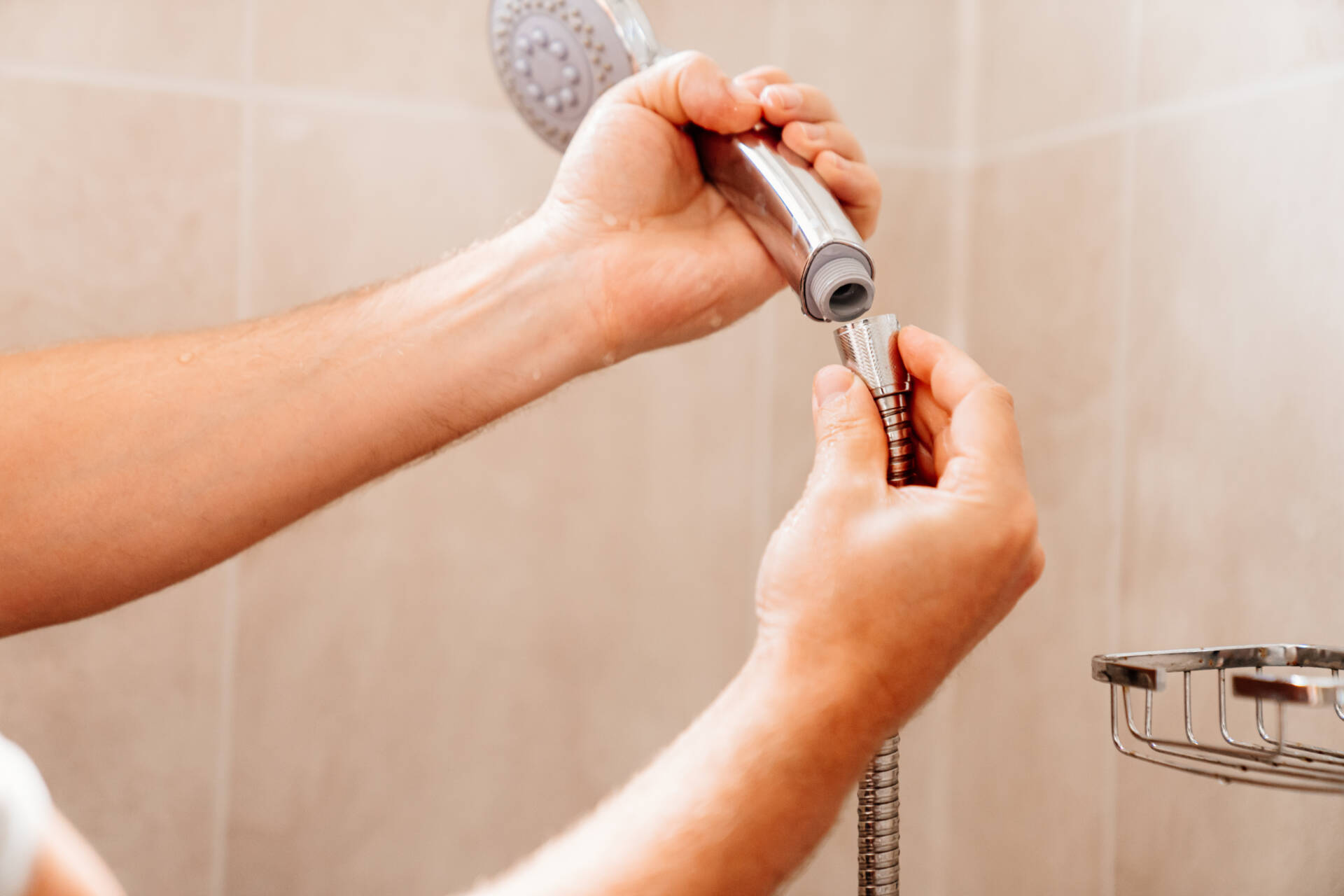
The source of leaking showerheads and bathtub spouts is similar to faucets. The water that flows from them is regulated by a cartridge, which lives behind the faucet handle(s) on the wall. Similar to a leaking faucet, a leaking showerhead may mean your cartridge washers, O-rings or other internal components need to be replaced. It is also possible that the cartridge itself needs to be replaced. This how-to article on homedepot.com will walk you through how to replace the cartridge.
4. Fix a running toilet.
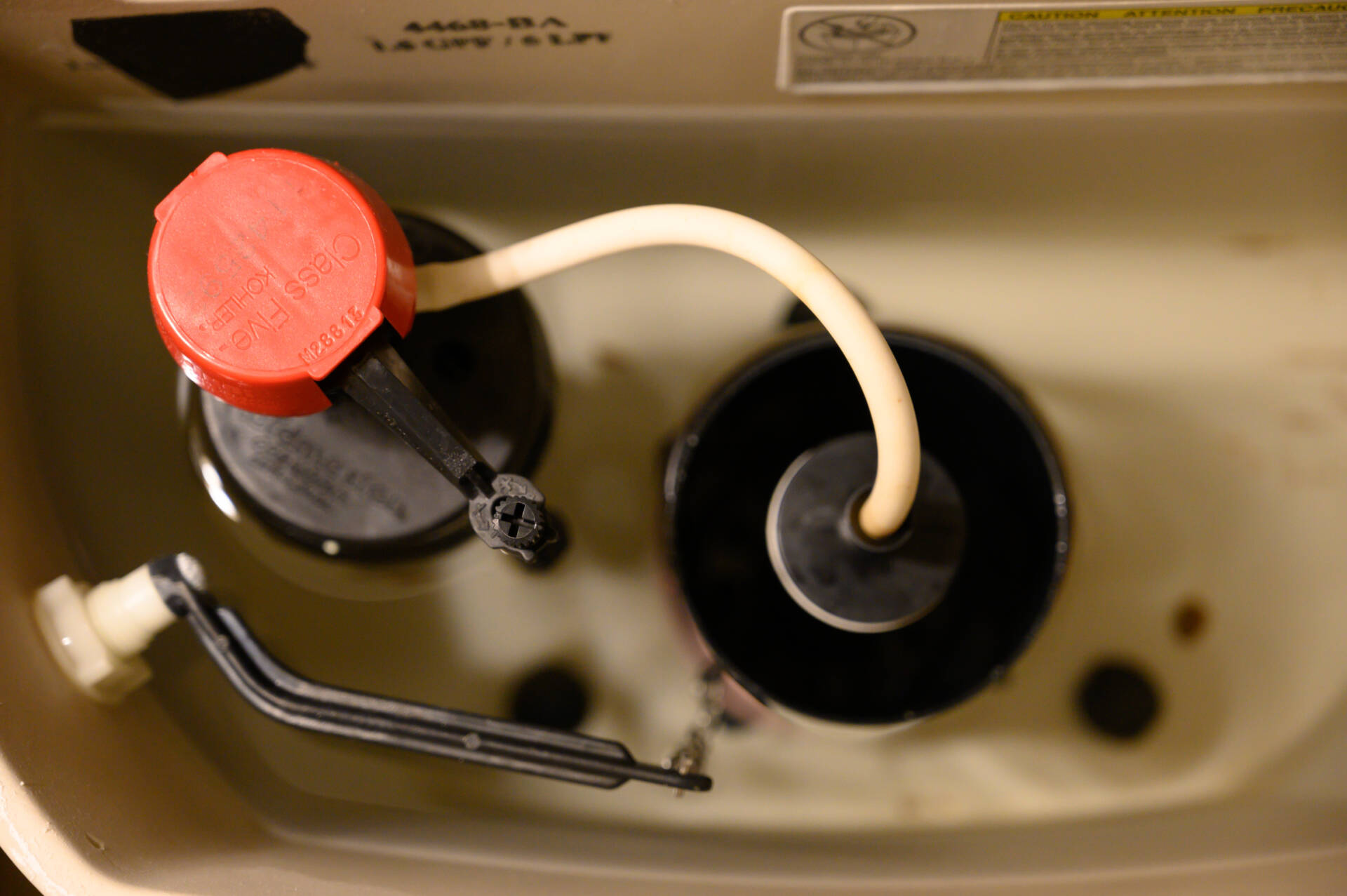
The most common failure point on a toilet is the flapper, which is the rubber valve seal that holds water in the tank and releases water into the bowl when the toilet is flushed. Failing flappers often leak almost silently, so you can lose thousands of gallons of water a year before you even know you have a leak. WaterSense recommends proactively replacing flappers every five years. This project is very common and simple, and a step-by-step tutorial is available here.
While other types of leaks in the home are possible, we have outlined the most common leaks to help you tackle these simple projects and save water and money. If you determine that your leak is in an in-ground irrigation system in your yard or from a leaking pipe, you may need a professional contractor to help identify and fix the problem.
The first step to conserving water is to stop wasting it in the first place. We hope The Home Depot and WaterSense have inspired you to take action to hunt down leaks in your home and fix them to save water and money.

